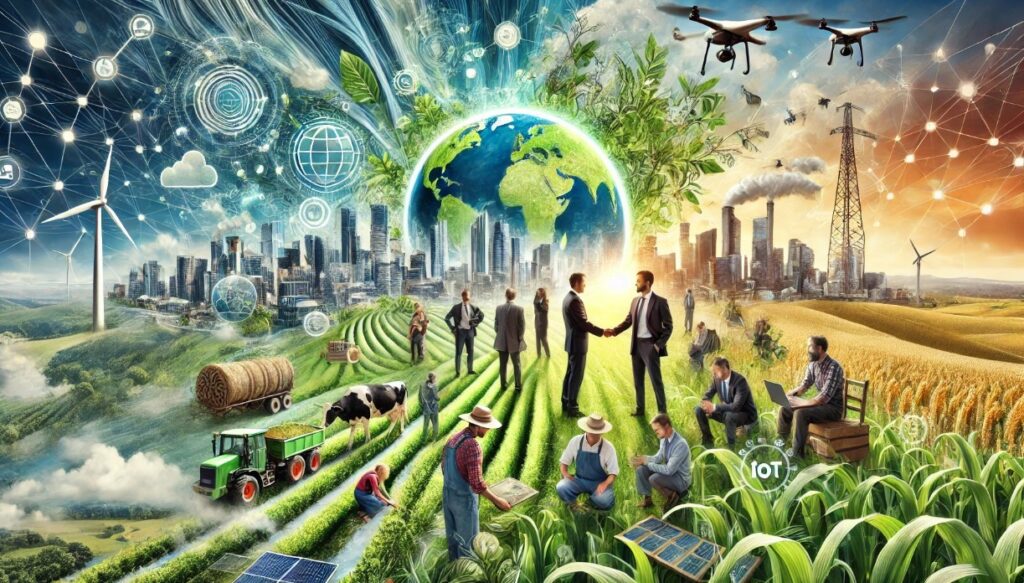
Introduction to Agrawau
Agrawau is a multifaceted concept that encompasses various interpretations across different fields, including culture, technology, and nature. Originating from a unique blend of cultural heritage and innovation, Agrawau is often referred to as a symbol of communal identity and progress. Its relevance can be seen in regions where traditional practices intersect with modern advancements, thereby creating a dynamic environment that reflects both historical significance and contemporary trends.
In cultural contexts, Agrawau may embody the traditional values and customs of a community that embrace the essence of shared cultural experiences. This aspect often involves rituals, art forms, and festivals that contribute to a sense of belonging among the people. By examining the cultural narratives surrounding Agrawau, we can understand how these traditions shape social structures and influence collective identities.
From a technological perspective, Agrawau represents the integration of innovative approaches that enhance efficiency and sustainability. This could involve the use of advanced techniques in agriculture or the incorporation of modern tools in artisanal practices. As technology evolves, the concept of Agrawau is likely to adapt, demonstrating the resilience of cultural practices in the face of change.
Moreover, in nature, Agrawau may refer to ecological principles that emphasize the harmony between human activities and the environment. The significance of Agrawau encompasses not only the preservation of natural landscapes but also the promotion of ecological balance, which is crucial for sustainable development. Thus, Agrawau serves as a reminder of the interconnectedness of various domains, highlighting the importance of a holistic approach to understanding its impact.
Cultural Significance of Agrawau
Agrawau is a term that resonates across various cultures, encapsulating a myriad of expressions in art, traditions, and daily life. This rich cultural notion serves not merely as a concept but rather as a vital thread woven into the fabric of numerous societies. In communities where agrawau is celebrated, it manifests prominently in artistic endeavors, ranging from traditional dance forms to intricate handicrafts. These art forms reflect the history, struggles, and aspirations of people, further solidifying agrawau’s role in preserving cultural heritage.
For instance, in certain indigenous tribes, rituals centered around agrawau are vividly portrayed through dance, which dances symbolize unity and celebration of communal identity. These events are not just performances; they are vital gatherings that strengthen community ties, as each participant contributes their unique interpretation of agrawau within these shared experiences. Similarly, the use of agrawau motifs in craftwork demonstrates a deep respect for nature, community, and ancestry, signaling its significance far beyond aesthetics.
The implications of agrawau extend into social interactions, where it serves as a cornerstone for fostering relationships among community members. Engagements, festivals, and communal gatherings revolving around agrawau facilitate bonding, as stories and experiences related to it are exchanged. This cultural practice creates a sense of belonging among individuals, thereby nurturing an environment of collaboration and mutual support. In cases where urbanization threatens traditional customs, initiatives aimed at revitalizing agrawau-centric practices work to bridge generational divides, ensuring the continuity of cultural narratives.
Through its various forms of expression, agrawau acts as a cultural cornerstone, promoting a sense of identity and community cohesion. This intricate relationship highlights the importance of understanding agrawau’s role in different societies, as each unique expression contributes to the broader tapestry of human experience.

The Role of Agrawau in Modern Technology
Agrawau has emerged as a significant force in the realm of modern technology, integrating seamlessly into various facets of innovation. Its applications span across software, hardware, and communication, demonstrating its versatility and potential to enhance operational efficiencies and functionalities. In software development, agrawau contributes to improved algorithmic design, optimizing systems for better performance and reliability. By utilizing agrawau, developers can streamline processes, leading to faster software builds and deployment cycles.
In the hardware domain, agrawau plays a pivotal role in the creation of advanced components. The integration of agrawau in circuitry and microprocessor design allows engineers to achieve higher processing speeds while consuming less energy. This not only enhances device performance but also supports the growing demand for energy-efficient solutions in an era increasingly focused on sustainability. Furthermore, the collaboration between agrawau technologies and smart devices has facilitated the development of the Internet of Things (IoT), empowering real-time data collection and analysis.
In terms of communication, agrawau has contributed to the evolution of networking technologies. The arrival of agrawau-driven innovations has made substantial advancements in broadband capabilities and mobile communications. Enhanced data transmission protocols, supported by agrawau, improve connectivity and reduce latency, resulting in seamless interactions across various platforms. As smart cities and collaborative ecosystems emerge, the role of agrawau in enhancing communication infrastructures will only grow in importance.
Looking ahead, the transformative effects of agrawau will more than likely give rise to future trends in technology. With ongoing research and development, we may witness enhanced machine learning capabilities, refined user interfaces, and stronger cybersecurity measures. In conclusion, the evolving impact of agrawau serves as a testament to its relevance in shaping modern technological landscapes, providing a foundation for groundbreaking innovations in various industries.
Environmental Impact of Agrawau
The emergence of agrawau initiatives has elicited diverse responses regarding their environmental impact on natural ecosystems. As a multifaceted practice often linked to sustainable land use, agrawau is designed to maximize ecological benefits while minimizing environmental degradation. Nonetheless, the complexity of its influence warrants a nuanced examination, which includes both positive and negative consequences.
On the positive side, agrawau practices frequently enhance biodiversity by creating habitats that support a range of flora and fauna. For instance, integrated agroforestry models incorporate native species in agricultural landscapes, promoting ecological connectivity. This approach not only revitalizes soil health but also aids in carbon sequestration, thus mitigating climate change effects. Research indicates that where agrawau has been effectively implemented, there are marked improvements in ecosystem resilience and the overall health of local watersheds, leading to enhanced water quality and availability.
In conclusion, while agrawau holds substantial promise for sustainable environmental practices, the intricacies of its implementation necessitate a careful and conscientious approach. Continued research and collaboration between environmental experts, policymakers, and local communities are essential to harness its full potential while safeguarding ecosystems worldwide.





